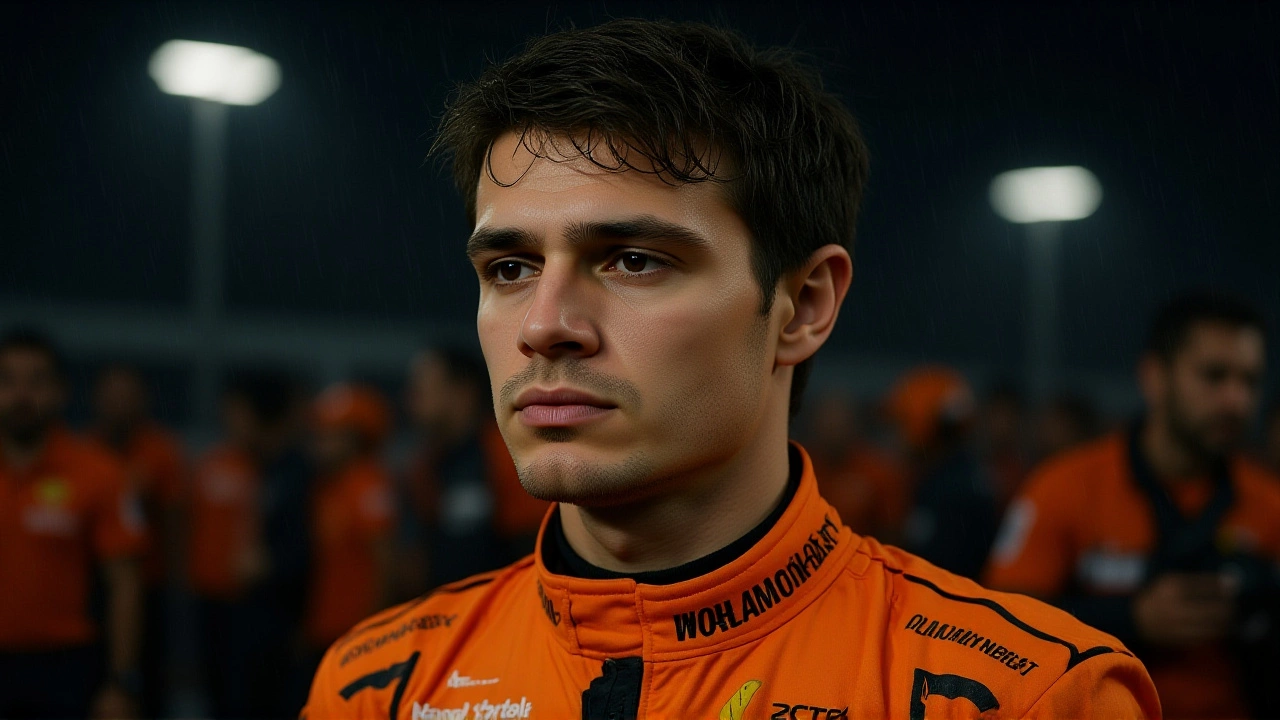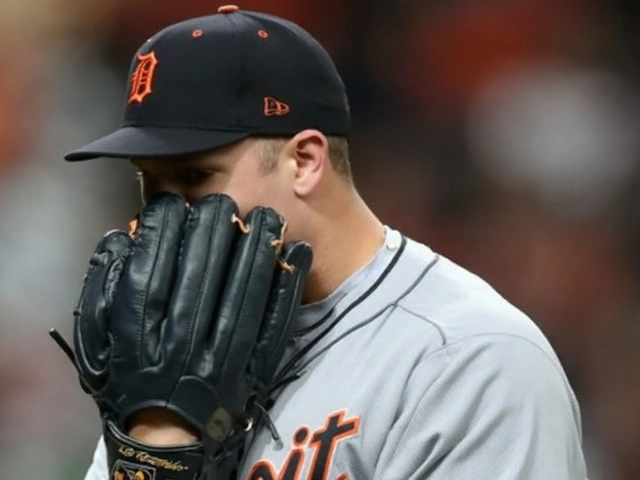The Formula 1 world was turned upside down in the early hours of November 23, 2025, when Lando Norris and Oscar Piastri, driving for McLaren Formula 1 Team, were stripped of their race results at the Las Vegas Grand PrixLas Vegas — not because of a crash, mistake, or penalty, but because their cars’ skid blocks were too thin. At 1:42 a.m. Pacific Standard Time, just three hours after the checkered flag fell on the 50-lap street race, stewards announced both drivers were disqualified under Article 3.5.9 of the 2025 Technical Regulations. The McLaren MCL39 chassis, designed under Rob Marshall, failed inspection: the titanium plank beneath each car measured under 9mm — the absolute minimum allowed. No discretion. No warnings. Just disqualification.
How a Tiny Piece of Titanium Changed Everything
It sounds absurd, doesn’t it? A 9mm slab of titanium, worn down by friction and speed, suddenly deciding the fate of a championship. But in Formula 1, these tiny details are everything. The skid block — or “plank” — isn’t decorative. It’s a critical safety and fairness device. By limiting how low a car can ride, it prevents teams from gaining aerodynamic advantage through illegal ground effects. When the plank wears below 9mm, it means the car has been running too close to the track for too long — a clear violation.
McLaren had been aware of the issue. Norris later admitted: “We had to do some managing towards the end of the race.” Team management had instructed him to lift off the throttle slightly on straights, to reduce downward force and preserve the plank. But it wasn’t enough. The wear was already too severe. And here’s the twist: they weren’t alone. Piastri’s car showed identical wear. Both cars failed. Both were out.
The Domino Effect: Who Moved Up, and Who Got a Second Chance
The disqualification didn’t just erase Norris and Piastri from the results — it reshuffled the entire podium. George Russell, who had crossed the line in third, was promoted to second. And in a stunning twist, Kimi Räikkönen, the 45-year-old Finnish veteran driving for Mercedes-AMG Petronas Formula One Team, surged from fifth to third. A double Mercedes podium. The kind of result they hadn’t seen since Monaco.
But the biggest beneficiary? Max Verstappen. The three-time world champion from the Netherlands, driving for Oracle Red Bull Racing, had been written off. Before Las Vegas, Norris led him by 42 points. Now? Just 24. With only 58 points left to fight over — 25 for a win, 18 for a win plus fastest lap, 8 for a Sprint win — Verstappen suddenly has a lifeline. He doesn’t need to win both remaining races. He just needs Norris to stumble. Once.

Championship Math: The New Equation
Before the disqualification, Norris was practically crowned. He led Piastri by 30 points. He led Verstappen by 42. A 24-point cushion sounds solid — until you realize the final two races are in Qatar and Abu Dhabi, and each can swing 33 points in total if you win both a Sprint and a Grand Prix. Norris still controls his destiny. He only needs to extend his lead to 26 points after Qatar to seal the title before Abu Dhabi. But now, Verstappen can afford to lose one race. He can even finish second in both and still win the title if Norris scores no more than 12 points over those two weekends.
“It’s not over,” Verstappen said quietly after the results were confirmed. “But it’s not over because of luck. It’s because of rules. And that’s how it should be.”
McLaren’s Apology and the Shadow of Technical Oversight
McLaren Formula 1 Team’s Andrea Stella, Team Principal based in Woking, Surrey, issued a public apology to both drivers. “This is on us,” he said. “We monitored the plank, we thought we were safe. We weren’t. That’s a failure in our data analysis and race strategy.”
The FIA’s Technical Delegates, who conducted the inspection at the Las Vegas street circuit near the Bellagio, confirmed the wear was consistent across both cars — not a random failure, but a systemic one. According to ESPN’s Formula 1 reporter, the composite material had worn 1.7mm beyond the allowable limit. That’s the difference between a podium and a penalty. No one saw it coming.

What This Means for the Rest of the Season
The fallout extends beyond the Drivers’ Championship. In the Constructors’ standings, McLaren’s lead over Red Bull has shrunk from 61 to 39 points. Mercedes, with Russell and Lewis Hamilton now both on the podium, closed the gap to just 17 points behind McLaren. The battle for second is suddenly alive.
And then there’s the psychological impact. Norris, who had looked so composed, so dominant, now carries the weight of a mistake he didn’t even realize he’d made. Piastri, who had been quietly building momentum, is left wondering if his season was derailed by a technical oversight. For Verstappen, it’s a second wind. For Mercedes, a rare moment of celebration. For Red Bull, renewed belief.
The Qatar Grand PrixLusail International Circuit arrives on November 30. Then Abu Dhabi. The final two races of the season. And for the first time since Monaco, the championship feels alive.
Frequently Asked Questions
Why was a 9mm skid block so important in Formula 1?
The skid block, or plank, is a titanium plate mounted under the car to enforce minimum ride height regulations. If it wears below 9mm, it proves the car was running too low — gaining illegal aerodynamic advantage by increasing downforce. This rule prevents teams from using extreme ground effects, which can be dangerous and unbalanced. It’s a fairness safeguard, not just a technicality.
Could McLaren have avoided disqualification if they had managed the plank better?
Possibly. McLaren had warned Norris to ease off in the final laps, but the damage was already done. The plank’s wear pattern suggests excessive contact over multiple laps, likely due to track surface inconsistencies in Las Vegas. Teams often use telemetry to monitor plank wear, but in this case, the data didn’t reflect the true rate of degradation — a flaw in their predictive models.
How does this affect Lando Norris’s chances of winning his first World Championship?
Norris still leads with 24 points over both Piastri and Verstappen. He needs to extend that lead to 26 points after Qatar to lock in the title before Abu Dhabi. That’s achievable — he’s won three races this season. But the pressure is now immense. One DNF or mechanical failure could hand Verstappen the opening he needs. The margin is thin, and the stakes are higher than ever.
Why was Kimi Räikkönen promoted to the podium, and is this his last F1 podium?
Räikkönen finished fifth on track, but with Norris and Piastri disqualified, he moved up to third. At 45, this is his first podium since 2018 and possibly his last. His performance in Las Vegas — steady, consistent, no mistakes — was a masterclass in veteran composure. Fans are calling it a fairy-tale ending, though Räikkönen himself shrugged it off: “It’s just points. I’ll take them.”
Will the FIA change the skid block rules after this incident?
Unlikely. The 9mm rule has been in place since 1994 and is considered one of F1’s most reliable fairness mechanisms. Instead, teams will now be required to submit more frequent plank wear reports during race weekends. Some insiders say the FIA may introduce real-time plank sensors in future seasons — but for now, the rule stays, and the responsibility remains with the teams.
What’s the historical precedent for this kind of disqualification?
In 2007, Fernando Alonso was disqualified from the Monaco Grand Prix after his McLaren’s plank was found under 9mm — the same violation. In 2019, Charles Leclerc’s Ferrari was disqualified from the United States GP for the same reason. But never before has a double disqualification of teammates altered the championship so dramatically. This is the first time in F1 history that a skid block violation has shifted the title battle from nearly over to wide open.




